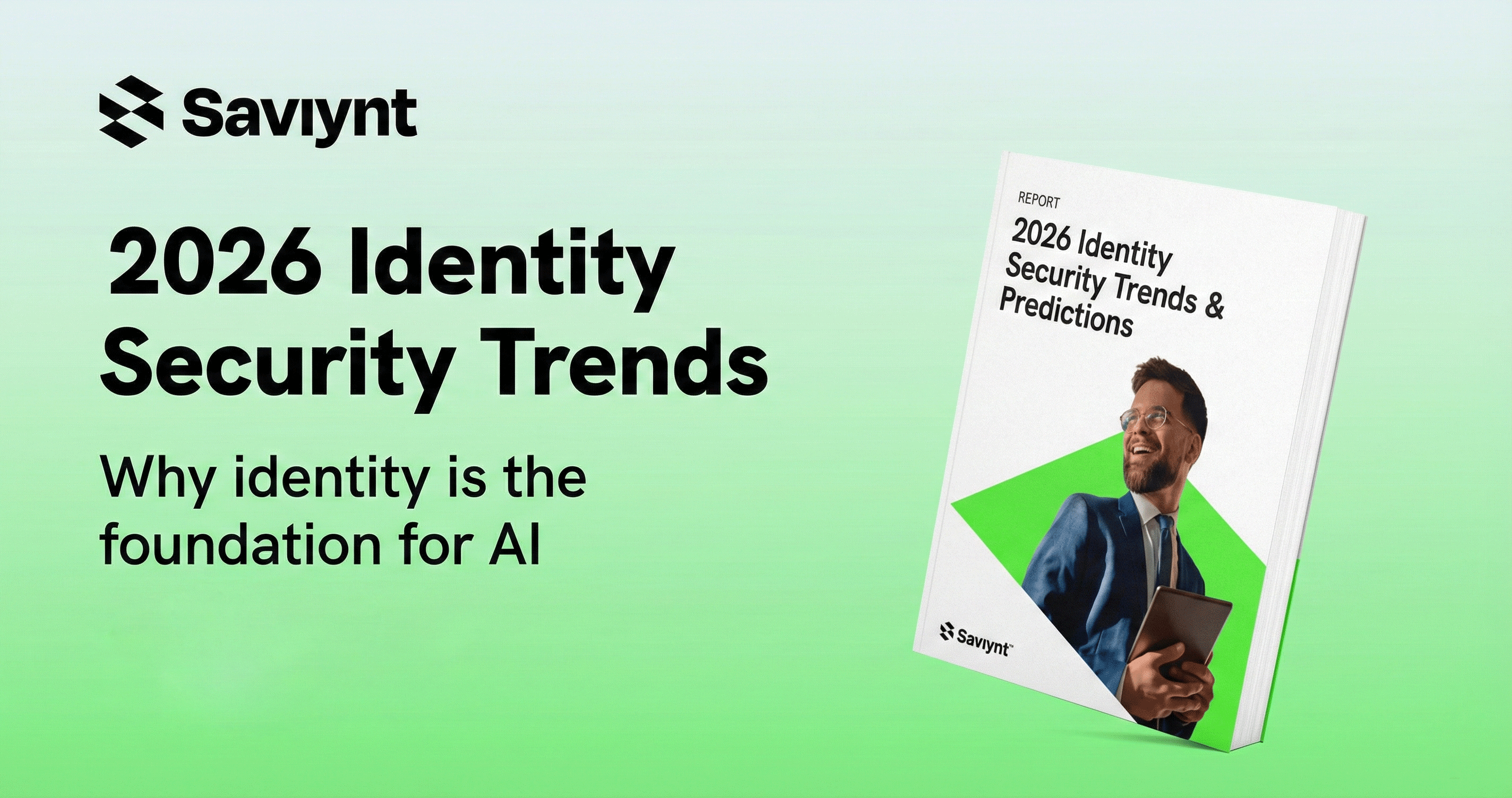In the last decade, Identity Security has experienced three pivotal moments. The first two were:
- The shift to delivering Identity Security platforms as a service, enabled by advancements in cloud technologies.
- The creation of converged identity security platforms to simplify integrations and provide a seamless user experience.
The third, was announced on September 10 of 2024:
Delivering an intelligent identity security platform powered by AI and deep ML technology through Saviynt Intelligence.
Designed not just for today’s business climate, Saviynt Intelligence has been designed to future-proof our customers’ identity security for the next decade. When something like this is announced, people are obviously curious, not just about the business benefits, but how it works. I’d like to take this opportunity to give you a closer look at the architecture of Saviynt Intelligence and discuss some of the features and outcomes provided by such a solution.
The Building Blocks of Saviynt’s Intelligence Engine

Fig 1. Illustrates the foundation of Saviynt’s Intelligent platform. The bedrock of platform’s intelligence lies with the data getting collected from various identity and security platforms.
The figure shows that the platform collects and ingests identity data from a variety of systems, not just identity security platforms, but from ERPs, other SaaS platforms, Cloud Vaults, CICD pipelines, and other third party systems, including ITSM, SIEM’s, etc.
Through these rich integrations, the platform ingests the following data sets into the industry’s first internet-grade and enterprise-ready “Identity Security Data Lake”, the core of Saviynt’s intelligence platform:
- Identities (Human and Non-Human)
- Assets
- Access (Coarse Grained, Fine grained and collecting who has access to what)
- Policies and Configurations (Identity policies describing conditions, subjects and scope of access, security and access related configurations)
- Identity events (using a pub/sub model)
- Trust and Risk signals from internal as well as external identity and security systems)
On top of the data lake sits Saviynt’s intelligence engine, comprised of three core components:
- AI/ML-based Access Recommendations - Saviynt’s 3rd generation, state of the art recommendations engine.
- Trust Modeling Framework - A multi-dimensional trust scoring model that combines a variety of risk signals to create a single weighted score, simplifying the decision making process. Signal weights can be adjusted, ingesting internal risk signals and peer access analytics to empower customers to drive autonomous decision making and be audit ready with full explainability.
- Gen-AI Engine - With the advancement in Large Language Models (LLMs), the intelligence engine solves some of the long-standing identity security problems, such as suggesting descriptions for poorly worded or missing entitlements descriptions or ownership discovery for service accounts.
Working together, the three components provide Saviynt Identity Cloud customers with the following, which will be covered more in dept in the other three blogs in the series:
- Actionable Insights on Identity Risks – Provide deep insights that empower organizations to be audit and compliance ready. Provide the necessary insights to approvers and prevents over provisioning of access, highlights risks associated through access path mapping (both from a user/machine identity to the accessible asset or risks with unused/outlier access)
- Intelligent Requests - Accurately predicts access patterns up to 94% to accurately recommend apps, roles and entitlements for those requesting access. Recommendations come with detailed explanations as to why recommendations were provided as well as the likelihood of requests being approved or not.
- Intelligent Certifications - Accurately predicts inliers and outliers by analyzing 14+ risk signals (peer scores, out of band access, SoD violations, etc.) to improve revocation of unnecessary critical access up to 75%*. Use scoring thresholds to automatically approve low risk access requests and approvals. Reduce rubber stamping and certifying over provisioned access and be audit-ready.
- Copilots - An AI-powered assistant that simplifies tasks for end users by offering clear choices and empowers decision-makers with informed insights. Saviynt addresses the jargon-heavy nature of identity platforms by enabling users without specialized knowledge to engage with the platform effortlessly through contextual questions. In this initial release, Saviynt has delivered copilot functionality for certification, helping reduce certification fatigue and improving the access revokes of sensitive and critical access up to 75%.
- Identity Hygiene - Improve identity data quality continuously and proactively. This feature identifies duplicates and manages them. In addition to this it allows for descriptions of roles, entitlements to be enriched or suggesting/finding owners for accounts etc.
An Overview of How the Data Lake Works
As I mentioned at the beginning of this blog, the data lake ingests identity data and events from a wide variety of sources. It does this via databases, APIs, files or events from event buses, etc., and writes the same to the data lake. Data and events could either be streamed or loaded. At the same time, the intelligence engine enriches, cleanses, or transforms the data.
The data lake itself is a cloud objector store capable of handling data at petabyte scale and is layered with the following components:
- Distributed Query Engine allowing for Intelligence engine to query the massive dataset easily
- Distributed Cache for performance and scalability as well as rending analytics and dashboards at a lightning fast speed
- Vector Database supporting large sets datasets stored as embeddings and allowing for end users to query the identity data using NLP queries
The AI/ML based recommendations engine then build access recommendations and feeds the same to business-facing services such as Requests, Certs, Analytics or Onboarding.

Fig. 2 Saviynt’s Identity Security Data Lake
The Importance of Security
Saviynt’s intelligence engine is built using AI and deep learning technologies in a secure, responsible and explainable manner for strong data and model governance. We treat security and compliance with utmost seriousness. Our customers trust us with their identity data and we remain committed to secure their data with the highest standards.
In regards to data governance, Saviynt does not use customer data to train LLMs across customers and customer data never leaves the Saviynt Cloud service boundary. Each customer tenant maintains an isolated LLM.
For model governance, there is zero co-mingling of data inputs so there is zero risk of models “remembering” other customer data. Customers also have the option of opting out of Saviynt Intelligence features.
I hope this gives a good insight of what is under the hood on Saviynt’s Intelligent platform.
We are ready for the future of identity security. Are you?
For more information, please reach out to your Saviynt Account team, request more information, or schedule a demo to see Saviynt Intelligence in action!









